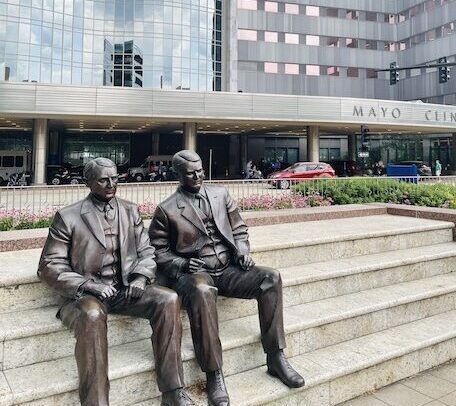Trauma is stored in the body. If we do not fully process our traumatic experiences; the body holds onto the memory in our nervous system, muscles and even at a cellular level.
We cope with traumatic experiences via natural, adaptive survival mechanisms.
Fight. Flight. Freeze. Fawn.
These subconscious mechanisms shield us from re-experiencing traumatic experiences, but can keep our body stuck in a survival loop. Post-traumatic growth, and trauma recovery, is possible, but takes practice, patience, understanding and self-compassion.
There are “Big T” traumas (war, natural disaster, disease, violence, abuse, etc.) and “Little t” trauma which are not necessarily life-threatening but still have a lasting psychlogical impact on our bodies.
These more subtle, repeated “Little t” traumas (emotional neglect, bullying, chronic stress, etc.) are negative experiences that accumulate over time and can have just as lasting a negative impact on our emotional well-being as a “Big T”.
Every adult human has experienced some degree of trauma in their life.
When trauma invades our world; the traumatic experience(s) shifts how we perceive our environment and alters our perception of safety.
We are not meant to live in a prolonged state of disequilibrium and if our body does not return to homeostasis; the build up of adrenaline, cortisol, norepinephrine, and endorphins stay overly active after they are released to help us navigate a traumatic experience and keep us safe and alive.
The body remembers trauma. It stores the negative memory in our physical body, even if our psyche has repressed the experience as a form of self-protection.
As Jon Kabat-Zinn says, overwhelm is the all too common feeling that our lives are somehow unfolding faster than the human nervous system and psyche are able to manage.
Triggers are often activated by sensory stimuli. Our nervous systems become activated via sensations that are then interpreted from our own personal database of all previous experiences. Anything, including an infants cry at a certain time, can send your body into an overly heightened internal state.
Being aware of what your triggers are and how they manifest in your body is an integral component of self-growth. Triggers are also great communicators that something is not right in our surroundings, and therefore, ourselves.
When we tune into what signals and messages our body is telling us, we learn how to self-regulate faster and more efficiently.
A conventionally trained clinically licensed psychologist who has since moved into forming her own global healing community, Dr. Nicole LePera, says that a trigger is an unhealed emotional wound. The level of emotions you experience gives you insight in to how long the trigger has gone suppressed.
I started rebalancing, slowly, with many steps backwards, at the start of June 2022. I spent May recovering from what I consider my 2nd very intense nervous system shutdown, also known as dorsal vagal shutdown or freeze.
This breakdown crippled me and ultimately brought me to the emergency room in early May. I arrived to an emergency room totally lost + disheveled, in a hypertensive state. Despite receiving good care and the best possible outcome; my 4 hour stay in a nearly empty emergency room triggered me.
An infant crying in the only other occupied room with a mom cooing a soothing lullaby, the day after Mother’s Day, on the first Mother’s Day I had no communication with my own mom, activated my nervous system.
I was also recently grieving my own lost opportunity at motherhood. I was diagnosed with Post-Traumatic Stress Disorder (PTSD) as a result of the agony I endured re-living, in the most minute detail, over the course of 7 drafts, 9 pages and 62 line-items in my Statement of Facts as the Plaintiff in litigation surrounding my IVF journey.
The hardest part of healing from trauma is having to sit in the discomfort, learn to accept and integrate the hard truths and hardest struggles we all have to endure at some point(s) in our lives.
The more I learn, the clearer it becomes that the ego, or the voice of our subconscious, naturally has adaptive coping mechanisms that are triggered/activated to protect us from harm and ultimately, their only desire is to keep us safe.
This is natural.
Intuitive.
Survival instinct.
These adaptive tools are our bodies way of keeping us alive.
Ignoring trauma, does not allow for someone to heal and move forward from the wounds that we pretend are not below the surface. The wounds are there whether we like to admit it or not.
The process of trauma recovery and ideally, post-traumatic growth, is not linear, but it is liberating.
A healing journey which allows one to ultimately live a more authentic, fulfilling life.
A quest inwards to explore our inner parts and wounds. Like any process, for each step forward & each small victory, there are hurdles and steps back. The ebb and flow of healing mimics the ebb and flow of life.
Emotional healing is the process of acknowledging, allowing, accepting, integrating, and processing painful life experiences and strong emotions. It may involve empathy, self-regulation, self-compassion, self-acceptance, mindfulness, and integration. Many people have a tendency to want to control the process of emotional healing by minimizing the pain and controlling their emotions, but this can actually inhibit the process of emotional healing.
My healing involved a lot of time alone, spent in solace and in nature. I allowed myself space to slow down and reflect on my internal emotional landscape + physical bodily sensations.
We have to slow down and listen to the innate wisdom of our bodies to build the life we truly desire. Our bodies are always cluing us in to what they need, we just need to learn to listen to their innate wisdom.






